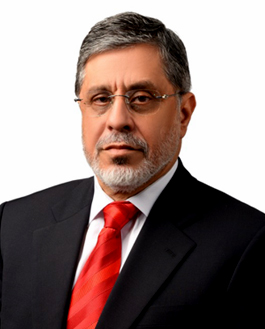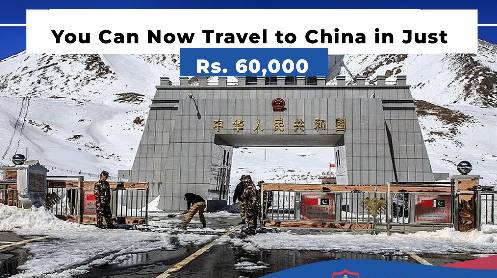While rebutting most of the claims of a nine-member committee’s 296-page report, Independent Power Producers (IPPs) asserted that the main reason for high power tariff in Pakistan is higher Transmission and Distribution (T&D) losses and taxation.
Independent Power Producers Advisory Council (IPPAC) have sent consolidated reply of all its members to the concerned public sector stakeholders which is expected to come under discussion in the Private Power & Infrastructure Board (PPIB) and CPPA-G.
The nine-member committee in its inquiry report held that under 1994 Power Policy, 16 out of 17 IPPs invested a combined capital of Rs51.80 billion and have so far earned profit in excess of Rs.415 billion, having taken out dividends in excess of Rs310 billion.
IPPs, in their joint reply maintain that the report has ignored ‘Time Value of Money’ and ‘Dollar Indexation’, giving the example of investment in a 12% Defense Saving Certificate which increases 3.5 times in ten years. Similarly, increase in gold prices has resulted in a profit 18 times the amount invested twenty years ago.
The companies maintain that returns are not analyzed against contracted returns but stated in absolute terms, which is meaningless. Due to typical tariff structure, profits of IPPs need to be adjusted to get true returns for investors / shareholders (such as, principal repayment and late payment interest are subtracted while depreciation is added back).
The report itself states the adjusted profit of 2002 IPPs Policy which is Rs 152 billion against reported profits of Rs 203 billion. Similarly, the adjusted profits of 1994 Policy IPPs will also need to be worked out which would be significantly lower than their reported profits of Rs 415 billion. In a number of cases, the stated amounts in the report do not reconcile with amounts reported in IPP’s records, financial statements.
On high dollar returns and returns during construction, IPPs further state that returns were offered by the government based on prevailing rates of returns, taking into account country risk. The returns were offered across the board without discrimination and if government does not want to offer dollar returns, it should change the future power policy.
The PIB yield does not take into account country risk and equity/project risk. Had a 15% Rupee based return been offered, a 7% devaluation of the Rupee would provide net returns of 8% in Dollar terms, which is equivalent to rate offered on Risk Free Eurobonds.
If investor just wanted to make 8% he would have invested in risk free government securities instead of investing in a power project which involves a number of additional risks including construction, execution, financial close, commissioning and operational.
Even if RoEDC is not offered, investors build it into RoE as no investor would agree to zero returns during construction period of 2-4 years. For example, if PIB coupon payments start after 2-3 years (synonymous to construction period of IPPs), PIB investors would require a higher yield.
The difference between the PIB rate of return of 10% and IPPs rate of 15% represents equity/project risk and not country risk. Alternatively, project/equity risk can be added to Pakistan Euro Bond Dollarized rate of 7 8% (which includes country risk) to arrive at rate of 15% or so.
Commenting on high RoE and short payback period, IPPs say the report ignores ‘Time Value of Money’ and ‘Dollar Indexation’. Companies in other sectors (such as FMCG, Oil & Gas) earning in excess of such returns.
Payback period ignores construction period which ranges from 2-4 years for different plant technologies. This results in total payback period of 4-6 years, which is normal. Further, payback should be calculated based on adjusted profits or more precisely, dividend net of taxes, instead of accounting profits.
The report itself has adjusted accounting profits to arrive at true returns to the shareholders yet when calculating % returns and payback, it uses the accounting profits.
The report only asks for “return” or deduction of Rs.64 billion while at the same time claiming hundreds of billions of rupees for excess profits. This by implication means that except the Rs 64 billion (on account of heat rate and (O&M) none of the other payments are beyond the contract. While the few IPPs who have earned these high returns can be analyzed, there is no reason to malign all 80 odd IPPs.
Rebutting the committee’s claims about excess payment on account of fuel, heat rate and O&M, IPPs claim that tariff initially determined at feasibility stage by Nepra is trued-up based on actual costs at COD which is fixed for the entire PPA term and no true up is allowed post COD. Both Heat Rate and O&M are fixed for the entire PPA term of 25 years.
The actual rates are better than tariff benchmarks in earlier years and worse in the later years, however, tariff does not recognize such change in performance and provides a uniform tariff for the entire PPA term.
Certain older plants have lower heat rates and higher O&M expenditure compared to tariff and they bear the loss by taking hit on their returns. Similarly, PPA does not provide for a claw-back mechanism for better performance and neither provides any compensation to IPPs for lower performance against the approved benchmark and any gains/(losses) are also to the account of the IPP.
If the government seeks to actualize heat rate and O&M, it should be on both sides, i.e. plants with heat rates and O&M costs higher than PPA benchmark should be compensated for the loss.
Many older government plants are now only 20% efficient compared to their original efficiency of 36%-38%, whereas IPPs with better management and rigorous maintenance regime are maintaining/exceeding their design efficiencies.
Commenting on monthly RoE payment in actual verses annual payments assumed in determining, IPPs say that 15% IRR is for shareholders and not the company and shareholders do not get paid dividends each month. Sponsors bear exchange loss of average 7% p.a. not only on ROE but also fixed and variable O&M.
While IPPs are paid interest based on KIBOR for delayed payments, it is not an equivalent arbitrage for the actual $ based IRR. Further, it is a standard financial industry practice to compute return on an annual basis and divide it by number of periods in the year to arrive at monthly/ quarterly returns without taking into account compounding.
Mismatch in debt repayment – IPPs claim Capacity payments are never made on time. Even if made on time, the debt and O&M would filter through the water fall under financing documents. The debt and O&M reserve accounts are generally non-profit bearing accounts.
In case of foreign debt, the projects have to bear exchange loss of average 7.3% p.a. as the exchange rate for quarterly indexation and actual debt payment lags by one quarter. There are other timing mismatches not covered by tariff which also adversely impact IPPs such as EPP payment terms under PPA and fuel payment terms under FSA.
On recovery of excess profits, IPPs say that the recommendation of recovery of excess profits, regardless of wrong calculations, is contrary to constitution of the country, which provides for sanctity of the contract. The mechanism also cannot work one way only.
If there is recovery to be made for excess profits, then there should be compensation to make up for shortfall in return in other cases including claw back mechanism. Switching from US$ to PKR return cannot be done mid-term. It could be applied in the future Power Policy to be announced by the government. The return should be same for local and foreign investors.
The report does not address the major issue of foreign debt (70-80% of project cost), which was a policy decision by the Government to make it mandatory to bring 50% of foreign currency requirement from outside Pakistan for all projects under 2013/2015 policy. It is not possible to shift the tariff regime to take and pay structure without first having competitive marketplace for buying and selling electricity like any other commodity which is liquid and financially secure.
The legitimate returns of Hubco and other IPPs set up under 1994 Policy have already been squeezed earlier resulting in some projects becoming financially unviable and ultimately shutting down while certain others are only marginally profitable with IRRs far below the rates guaranteed under the Power Policy.
Excess set-up cost – The coal plants are set up on upfront tariffs. The issue negates the very purpose of upfront tariff as any gain or loss is to the account of sponsors. Further, Required Commercial Operation Date (RCOD) were very tight. Due to delay in financial close, the Sponsors injected shareholder loans to fund the project construction in the interim to ensure RCOD is met.
The cost of such shareholder loan is not reflected in the actual IDC. Furthermore, all PPAs are backed by the Sovereign Guarantee of GOP provided under terms of IA.
Commenting on the recommendation “shift from take or pay contract provisions” the IPPs are of the view that it is naive to suggest that any entity can operate on marginal cost for extended period without recovering all the fixed costs.
Had it been open market operations and assuming plants could sell at levels on plant factor (36%-88%), then fixed costs would be grossed at this utilization factor. For instance, if an IPP capacity payment is Rs 2/kWh, then with operations at 50% plant factor over long term, the capacity price that it would charge the buyer would be Rs 4/kwh and not Rs 2/kwh.
Therefore, to suggest that TAP would result in savings of Rs 28 billion annually is fundamentally flawed. This applies to Return on Equity as well. If investors were to recover their returns in first 10 years instead of 25-30 years, the rate of return would have been much higher than 15%.
Regardless of contractual protections, in a single buyer market, shift cannot be made to TAP basis and then develop an open market. The recommendation is suggesting putting cart before the horse.
The termination amounts calculated in the report are not correct as it uses “accounting” net ash flows instead of net cash flows as defined in the contract. Further, the existing receivables of IPPs have altogether been ignored, which would have to be cleared as part or termination and are much more than possible termination amounts.
IPPs further say that the following areas have been ignored in report’s Budgetary subsidies of Rs 3,202 billion ;(i) circular Debt of PKR 2,000 billion with annual markup cost of PKR 270 billion;(ii) Discos receivables and Discos under collection Rs 633 billion;(iii) massive Net Hydel Profits (NHP);(iv) 3% transmission losses, 17% distribution losses, 9% under recovery ;(v) cost of electricity on generation basis of 10.6 cent/kWh translates to cost of 14.5cents/kWh on collection basis and ;(vi) excess transmission line cost. Tariff of regional countries is lower because of lower T&D losses and lower taxes.





